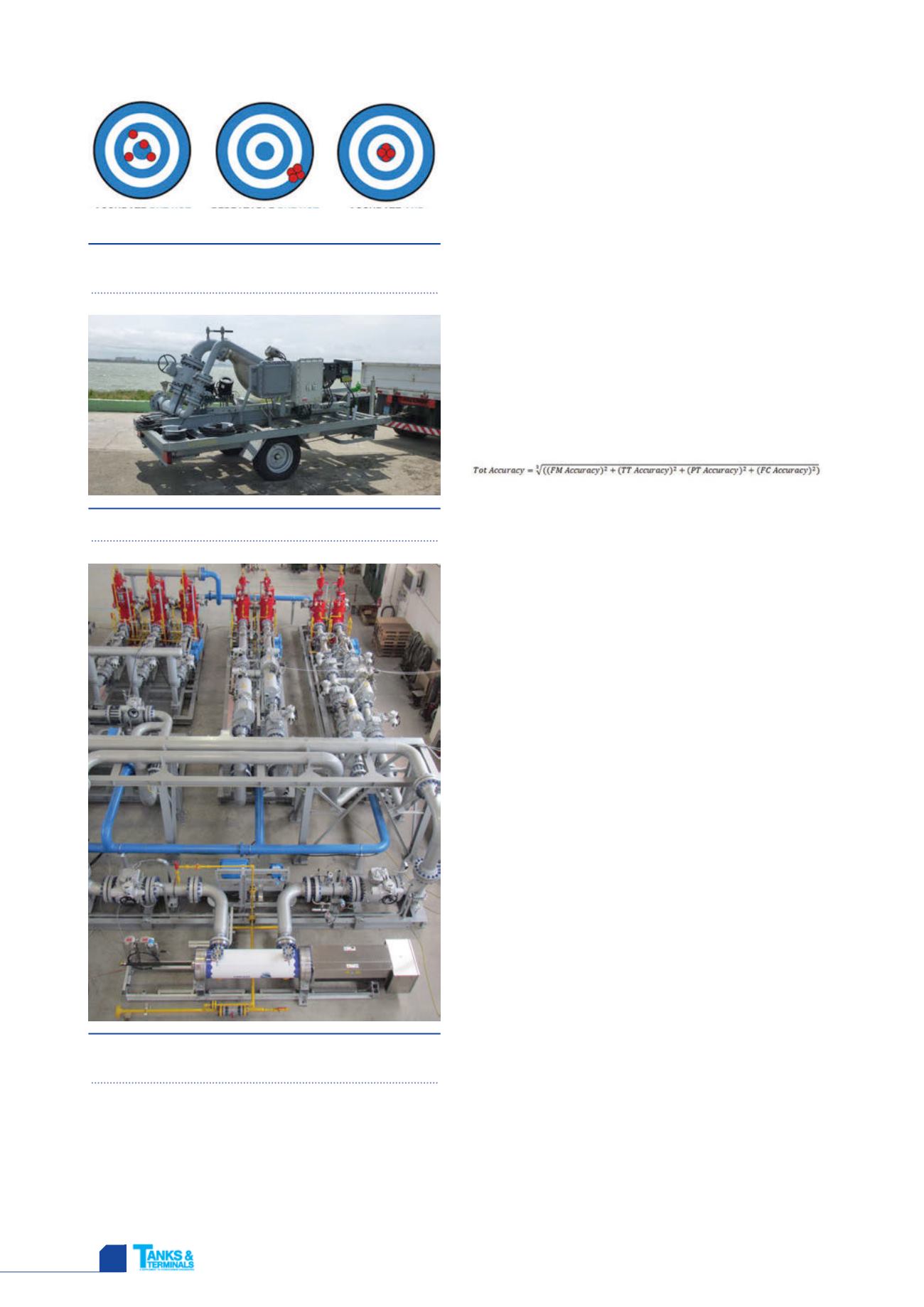
HYDROCARBON
ENGINEERING
52
commercial sales invoices are based on their results. Accuracy,
reliability and repeatability are the key factors that differentiate
a custody transfer system from other metering applications.
The accuracy must be the best possible, and must be
guaranteed during the whole lifecycle of the system for all of
the different process conditions that could occur.
Figure 1.
Onsite verification/recalibration process
simply explained.
ACCURATE
BUTNOT
REPEATABLE
REPEATABLE
BUT NOT
ACCURATE
ACCURATE
AND
REPEATABLE
Figure 2.
Mass meter mounted on portable trailer.
Figure 3.
Customised LACT units completed with
small volume piston prover.
Defining accuracy
In custody transfer metering systems, the accuracy considered is
the total accuracy of the complete system. This is a combination of
the accuracies of all the instruments related to the entire
measurement.
Imagine, for example, a volume custody transfer metering
systemwhere volume at standard conditions (typically 15˚C and
1.01325 mbar) will be the output requested; to obtain the standard
volume, a single flowmeter, mass or volume will not be enough. A
temperature transmitter and a flow computer, at the very least, will
also be necessary to allow a proper conversion from gross to
standard volume, according to API correction tables. Moreover, for
some fluids and applications, compressibility could be a challenge
and, therefore, pressure compensation could also be necessary,
with consequent further need for a pressure transmitter.
For this specific case, the complete system uncertainty will be
given by the combination between the uncertainty of the flow
meter, the temperature transmitter, the pressure transmitter and
the flow computer, as per the simplified formula below:
Where:
n
FM = flow meter.
n
TT = temperature transmitter.
n
PT = pressure transmitter.
n
FC = flow computer.
It is evident that the best system accuracy can be obtained
only by considering the best combination of different instruments,
and not just the selection of a flowmeter model. In flowmeter
catalogues, values such as 0.1 % accuracy are stated, whereas
international standards such as OIML-R117 and MI-005 request a
best accuracy class (pipeline metering) of 0.3%.
Technical standards, however, do not forbid companies to
achieve better results than what is mandated. This means that,
within the same application (e.g. pipeline metering), better
performances could be achieved by selecting different instrument
technology, models and brands with clear direct consequences on
the overall performances to lower the billing uncertainty.
Accuracy in custody transfer
Imagine a common 6 in. pipeline application for Brent crude at a
current rate of US$45/bbl. Considering a flow rate of 80 000 bpd,
each day around US$3.6 million of oil would flow through this
pipeline; this would be invoiced from the supplier to the buyer,
which could be, for example, a refinery.
The invoice would be based on the performance of the
custody transfer metering system, which, according to the above
mentioned OIML-R117 and MI-005 standards, must have an
accuracy of at least +/-0.3% for this application. This translates to a
band of error of 0.6% amplitude corresponding to US$21 600/d, or
US$7.884 million/y.
Installing a more accurate metering systemwould reduce this
band of error, consequently increasing the reliability of the invoices
and benefiting both the supplier and the buyer.
Repeatability
Accuracy must be confirmed and certified onsite, and not just
declared on paper. Site and process conditions can be harsher than
the ones declared on the instrument data sheets, which are based


